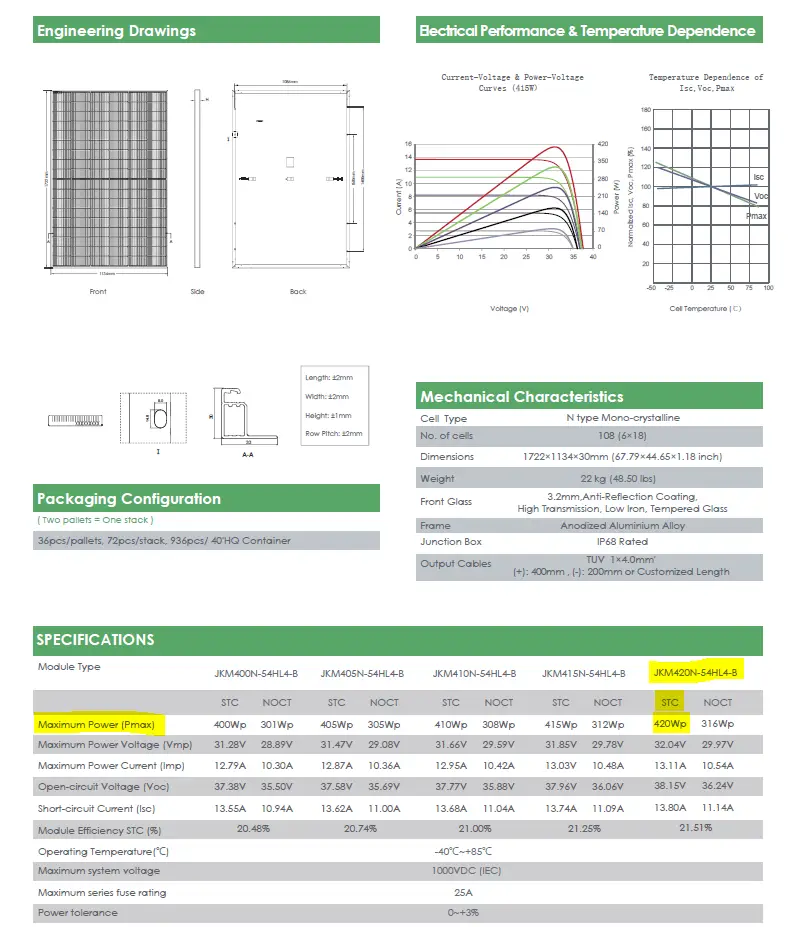How Much Will your BER Improve by Upgrading with Solar PV?
Are you considering investing in Solar PV and wondering how much it will improve your Building Energy Rating (BER)? We’ve got you covered. With our new Solar PV calculator, you can easily find out just how much your BER will improve. Let’s walk you through the process.
Understanding Solar PV and Its Impact on BER
Photovoltaic (PV) technology converts sunlight directly into electricity, making it a valuable addition to your home’s energy system. The energy produced depends on the installed peak power (kWp) of the PV module, along with factors like roof slope, orientation, and shading. More electricity is produced when the sunlight is more intense and hits the PV modules directly.
The BER Calculation Process for Solar PV
The calculation to determine how much your BER will improve with Solar PV is straightforward, and it follows the method outlined in Appendix M of the DEAP (Dwelling Energy Assessment Procedure) manual, specifically Section M1: Energy from Photovoltaics (PV) Technology.
If you would like to find out more about the DEAP methodology, you can download our BERtech.ie App.
Here’s a step-by-step guide to how the calculation works:
Step 01: Survey by the BER Assessor
During the BER assessment, the assessor will:
- Check the slope of the roof where the panels are installed.
- Record the number of panels.
- Determine the orientation of the panels and check for any overshading.
Step 02: Gathering information on the panels
The specific make and model of the PV panels are crucial for the calculation. If the panels were installed as part of a grant-aided project, the easiest way to get this information is from the signed declaration of works form, which includes the exact model number. If this document is unavailable, a signed letter from the installer on headed paper, stating the exact make and model, will also be acceptable. Once the make and model of the panel has been confirmed the Watt Peak (Wp) can be taken from the technical data sheet. This must be CE marked and state the correct standard, IS EN 61215/IEC 61215: Terrestrial Photovoltaic (PV) modules with Crystalline Solar Cells Design Qualification and Type Approval.

Step 03: Performing the calculation
Once the necessary information is collected, the calculation is carried out as follows:
Electricity produced by the PV module (kWh/year) = 0.80 x kWp x S x ZPV
– S: The annual solar radiation, determined from Table H2 (based on the orientation and pitch of the panels).
– ZPV: The overshading factor from Table H3.
This formula gives you the amount of “delivered energy” you’ll save annually with your new Solar PV array.

Table H2: Annual Solar Radiation, kWh/m2

Table H3: Overshading Factor
Now using our calculator you can try it out for yourself. Simply enter the Watt Peak (Wp) of your panel, the slope of your roof, the orientation, overshading and the number of panels.
The result will be the delivered energy in kWh / year.
Solar PV Calculator
Delivered Energy (kWh/year) for One Panel:
--
Delivered Energy (kWh/year) for the solar PV Array:
--
Step 04: Converting to Primary Energy per meter squared
You might wonder what “delivered energy” means. Delivered energy is the electricity produced by your Solar PV system, which is shown on your energy bills. However, for the BER certificate is it shown in, “primary energy,” which includes an additional factor to account for the energy used in producing the electricity.
Currently, the conversion factor from delivered to primary energy is 1.75.
To calculate the impact on your BER, the last step is to express the energy savings in terms of kWh per square meter (kWh/m²), which is the unit shown on your BER certificate. Don’t worry, you don’t need to measure your entire house, this is already done if you have a valid BER certificate. Just enter your BER or MPRN number into the SEAI National BER Register and you can find the area used to calculate your current BER rating. Now using our calculator enter the delivered energy and your floor area to see how much primary energy will be saved and how much your existing BER rating will improve.

Primary Energy Conversion Calculator
Converted to Primary Energy (kWh/year):
--
Primary Energy per Unit Area (kWh/m²/yr):
--
Subtract the result from your current energy rating to find your new rating.


This is brilliant! So easy to do and understand. Well done!